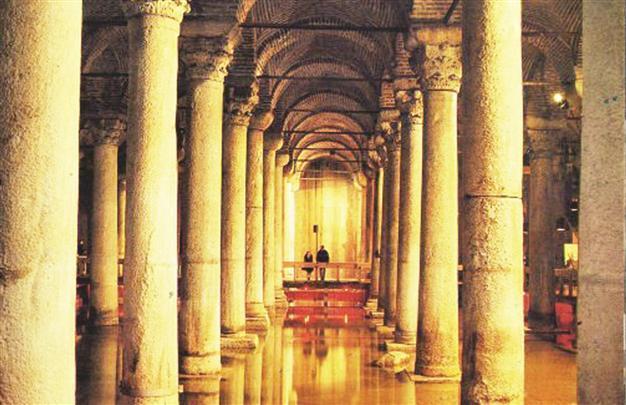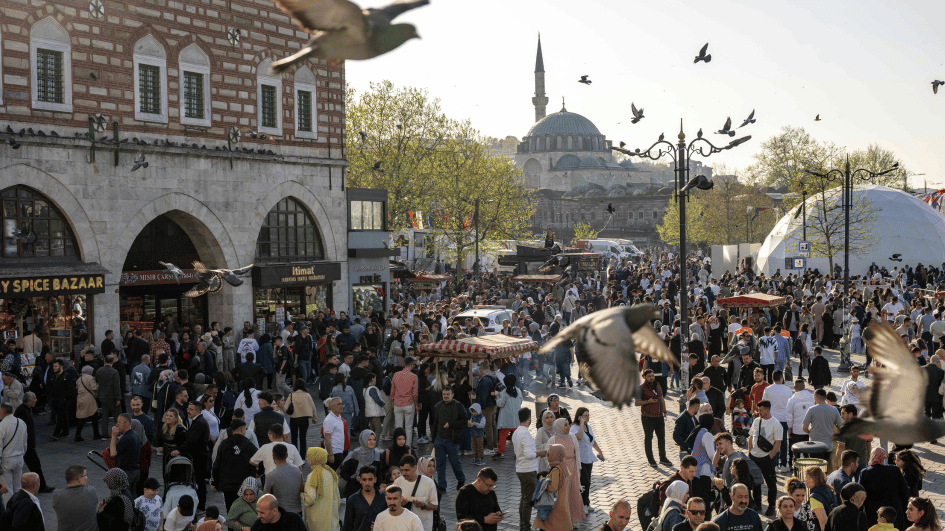Istanbul’s Basilica Cistern, Yerebatan, a mystery of the East
ISTANBUL - Anadolu Agency

Yerebatan Cistern was visited by 2.2 million people last year.
Istanbul attracts thousands of visitors from all around the world for its magnificent historical cisterns, drizzled both above and underneath all over the city. Cisterns, which generously provided for the water needs of the people during periods of drought were used for many purposes during the history such as silk and lemon warehouses or a shelter after they were drained.Meaning “small pools” in Arabic, cisterns were stone-made stores to stock up the waters of rain, lakes and rivers to be used efficiently when required.
Being the largest of Istanbul, the Basilica Cistern, (Yerebatan Sarnıcı) is Istanbul’s most extraordinary tourist attractions in the Sultanahmet district.
Having broken its own historical record after world famous writer Dan Brown’s recent book ‘Inferno’ was published, the Basilica Cistern was visited by more than 2.2 million people last year.
The bestseller also includes a reference to the Hürriyet Daily News and one of its articles. Brown has quoted a brief paragraph from a Hürriyet Daily news article on Göksel Gülensoy, who had accessed the tunnels underneath the Hagia Sophia in 2009.
The entrance to the Basilica Cistern is in the Sultanahmet region, next to Haghia Sophia. The cistern was built during the reign of Emperor Justinian I in 532 to meet the water needs of the Palace.
The Basilica Cistern was given its name for the reason of being located under the Stoa Basilica. It covers an area of 140 meters long and 70 meters wide. The cistern has 336 marble columns in Ionic or Corinthian styles, which are 9 meters in length. To enter the cistern, one has to go down a 52-step staircase.
100,000 tons of water kept
Water was brought from the reservoir in Eğrikapı, in the Belgrade Forest, 19 kilometers away from the city. The cistern was capable of storing 100,000 tons of water coming from the reservoir. With the 971-meter-long Bozdoğan Aqueduct and the 115.45 meter long Maglova Aqueduct, the water was transported to the city center which was built by Emperor Justinian.
The cistern was opened to the public in 1987 by the Istanbul Metropolitan Municipality. Two heads of Medusa, a female monster of the underworld in Greek Mythology, are used as bases for two columns on the left side of the cistern.
Dating back to early 4th century, it is still unknown from where they were removed and brought from.
Of the three sisters only snake-headed Medusa was mortal, who had the ability to turn those who look at her into stone. At that time, images and statutes of Gorgons often erected in order to protect great structures and special places from evil forces.
She fell in love with Perseus who was the son of Zeus, a Greek God, but Goddess Athena was in love with Perseus and was therefore very jealous of Medusa. For her jealousy, Athena turned Medusa’s hair into snakes. It was believed that since then, whoever looked at Medusa, would turn into stone.
















